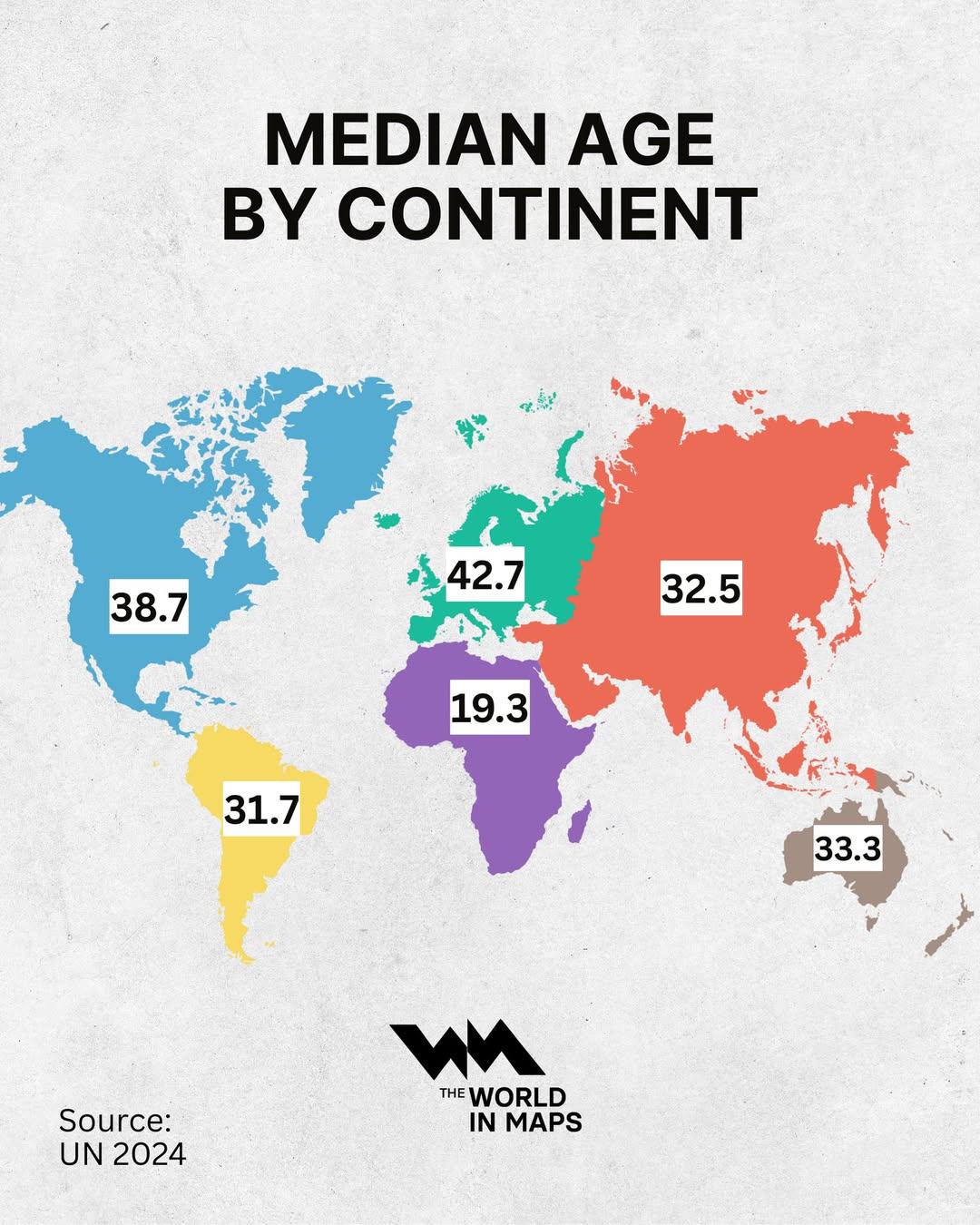Median Age by Continent Map


David Chen
Data Visualization Specialist
David Chen is an expert in transforming complex geographic datasets into compelling visual narratives. He combines his background in computer science ...
Geographic Analysis
What This Map Shows
The "Median Age by Continent" map provides a visual representation of the median age across different continents, revealing significant demographic variations. This visualization highlights how the age distribution of populations can vary dramatically from one region to another. The median age is a critical indicator of societal structure, reflecting factors such as birth rates, life expectancy, and economic conditions.
Deep Dive into Median Age
The median age of a population is defined as the age that divides a population into two equal halves, meaning half the people are younger and half are older. This statistic is crucial in understanding the demographic landscape of a region. For instance, a younger median age often indicates higher birth rates and a population that is still growing, while an older median age suggests lower birth rates and a greater proportion of older individuals due to increased life expectancy.
Interestingly, the global median age has been rising steadily over the last few decades. In 2023, the world’s median age is estimated to be around 30.4 years, up from 28.9 years in 2000. This increase is a result of various factors, including advances in healthcare, improved living conditions, and changes in societal norms regarding family size. Countries with a high median age, such as Japan and many European nations, face challenges such as a shrinking workforce and increased healthcare costs for an aging population. Conversely, younger populations in regions like Sub-Saharan Africa present different challenges, including the need for job creation and education.
The implications of median age extend beyond mere numbers; they influence economic growth, social services, and even political stability. For example, countries with a younger median age, like Niger (which has one of the highest median ages at around 15 years), often face urgent needs for education and employment opportunities to harness the potential of their youth. In contrast, nations like Germany, with a median age of around 47 years, are grappling with the implications of a declining workforce and the need for policies that support an aging population.
Regional Analysis
When analyzing median ages by continent, distinct trends emerge. For instance, Africa boasts the youngest median age of any continent, with an average around 19.7 years. Countries like Uganda and Mali exemplify this youthful demographic, facing both opportunities and challenges in harnessing their population for economic growth. The youthful energy present in these nations can drive innovation and economic development, provided there are adequate educational and employment opportunities.
In contrast, Europe presents a stark contrast, with a median age averaging around 43.6 years. The aging populations of countries like Italy and Greece highlight the challenges of maintaining economic productivity amid declining birth rates. These nations are witnessing a demographic shift that could impact everything from pension systems to healthcare services. Interestingly, Eastern European countries, like Poland and Hungary, are experiencing out-migration, further exacerbating their demographic challenges.
Asia, while diverse, generally has a median age around 30 years but varies widely within the continent. Japan stands out with one of the highest median ages at approximately 48.4 years, illustrating the consequences of low birth rates combined with high life expectancy. In contrast, Southeast Asian countries like Indonesia have a median age closer to 30, indicating a younger population that is more dynamic in terms of economic potential.
Significance and Impact
Understanding median age and its implications is crucial for policymakers, businesses, and society as a whole. As populations age in many parts of the world, there are pressing questions about sustainability, economic growth, and social services. For instance, how will countries adapt their healthcare systems to cater to an increasingly elderly population? What strategies will be implemented to ensure that younger populations are adequately educated and employed?
Moreover, the rise of global migration trends adds another layer of complexity to demographic dynamics. Countries with aging populations may look to attract younger migrants to balance their workforce, while younger nations may experience brain drain as their most educated individuals seek opportunities abroad.
As the world continues to evolve, the median age will play a crucial role in shaping economic policies, healthcare initiatives, and social structures. The trends observed in this map are not just numbers; they represent the future of societies and the challenges they will face in an ever-changing global landscape.
Whether you are a student, researcher, or simply a geography enthusiast, the implications of median age are far-reaching, impacting everything from local communities to global economies. Keeping an eye on these demographic shifts will be essential in understanding our world today and in the years to come.
Visualization Details
- Published
- October 14, 2025
- Views
- 36
Comments
Loading comments...